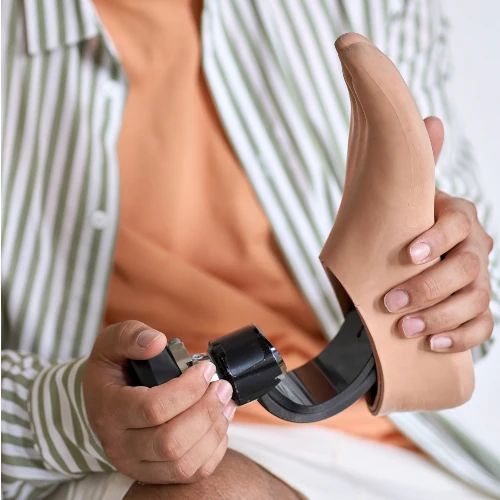
Although prosthetic legs with two-way sensory feedback haven’t reached the marketplace yet, their potential benefits have been well established in clinical trials. Devices that restore “feeling” to the missing limb enable amputees to walk with better balance, greater speed, more confidence, and less mental effort.
A new study from Case Western Reserve University and the Cleveland VA reinforces those findings, while adding new insight about the neurological mechanisms underlying these benefits. According to this research, neuroprosthetic devices restore a critical connection between the soles of the feet and a brain region called the sensorimotor cortex. “Plantar sensation directly affects central nervous pathways involved in motor adaptation,” the authors assert. “Our neuroprosthesis provided a unique model to investigate the role of the lower limb in perceptual recalibration.”
For this study, below-knee amputees received nerve-cuff implants that wrapped around the peripheral nerves of their residual limb and were attached to pressure sensors in the insole of the prosthetic foot. They were then asked to walk on a split-belt treadmill, in which the belt on the healthy-leg side can move faster or slower than the belt on the prosthetic-leg side. Maintaining balance in these conditions requires precise, ongoing sensitivity to the environment underfoot—an obvious challenge for any leg amputee.
To establish a baseline, the amputee participants first attempted this exercise while the neuroprosthetic sensors were inactive. When they repeated the experiment with the sensors turned on, they exhibited a significantly steadier and more symmetrical gait—one that was indistinguishable from the gait of able-bodied control participants. In addition, when the amputee subjects were periodically asked whether they perceived the belts to be moving in unison or at differential speeds, their accuracy improved significantly when the sensors were activated—and, again, matched the performance of the control group.
This research differs from earlier neuroprosthetic studies because it’s focused on gait stability, symmetry, and adaptation, rather than walking speed and metabolic energy cost. “Our findings on improvements in gait biomechanics have not been reported before,” the authors write. “The insights gained through this research shed light on the profound implications of integrating prostheses with the body’s physiological systems.”
Read the full report in the October issue of Science Robotics.




